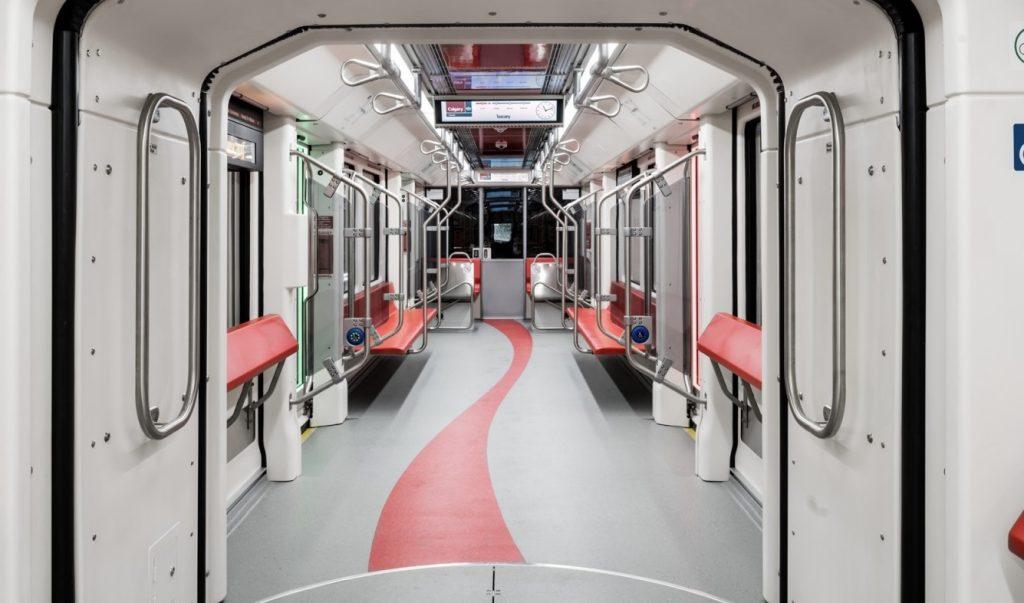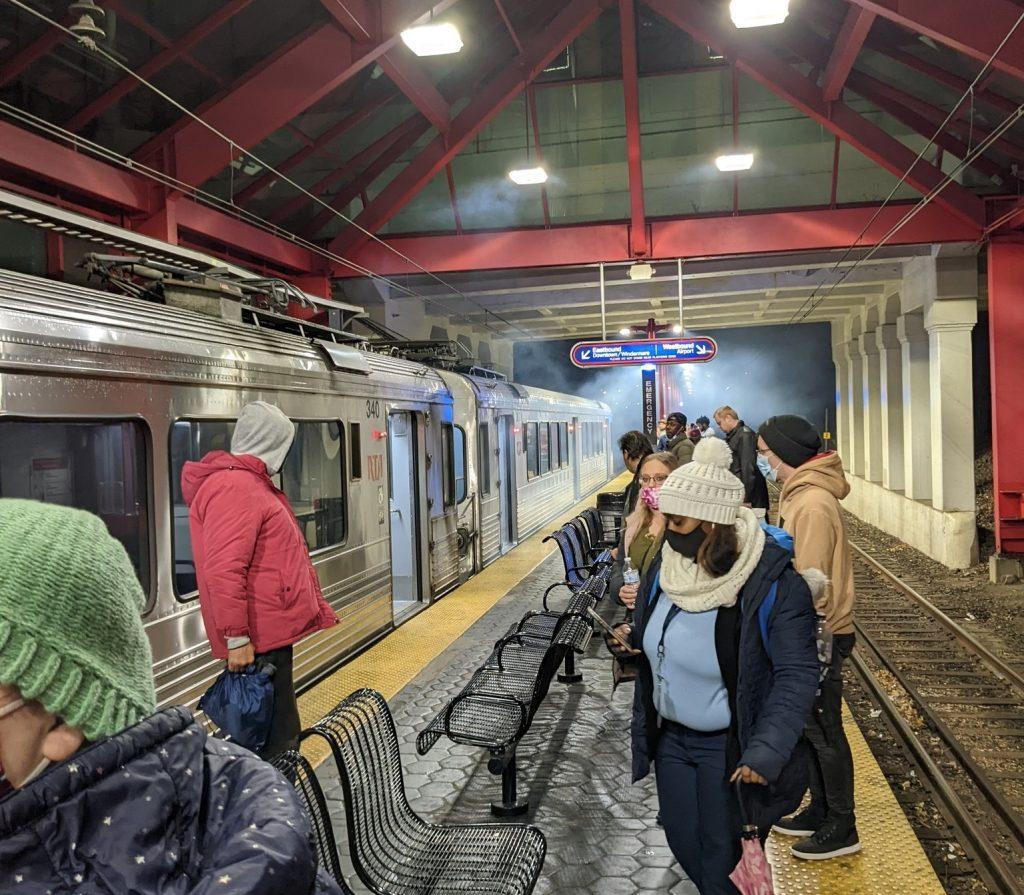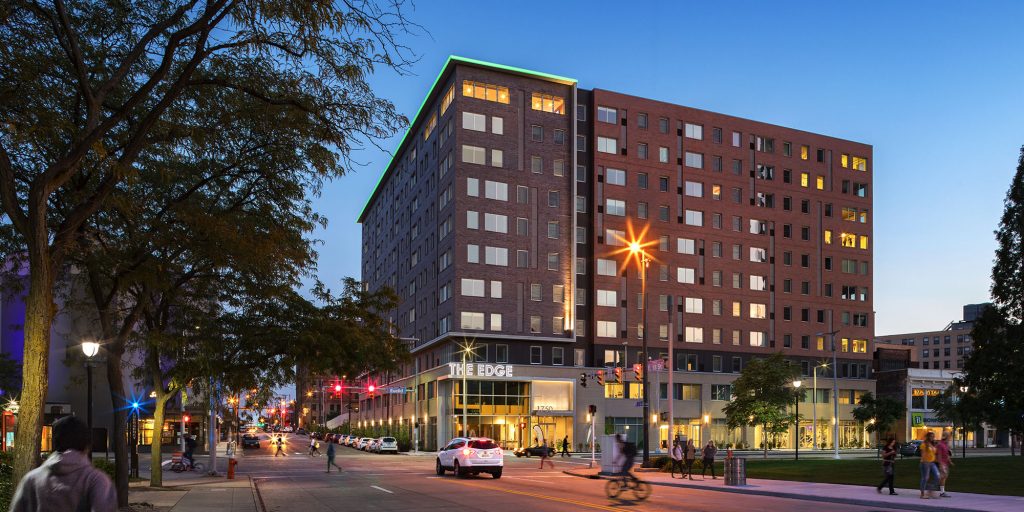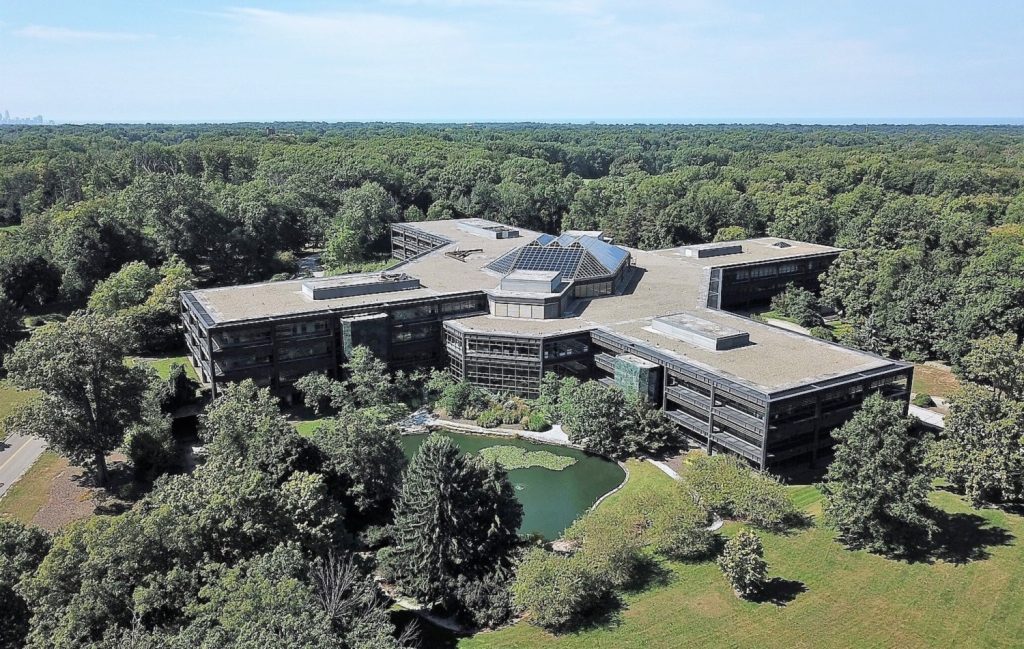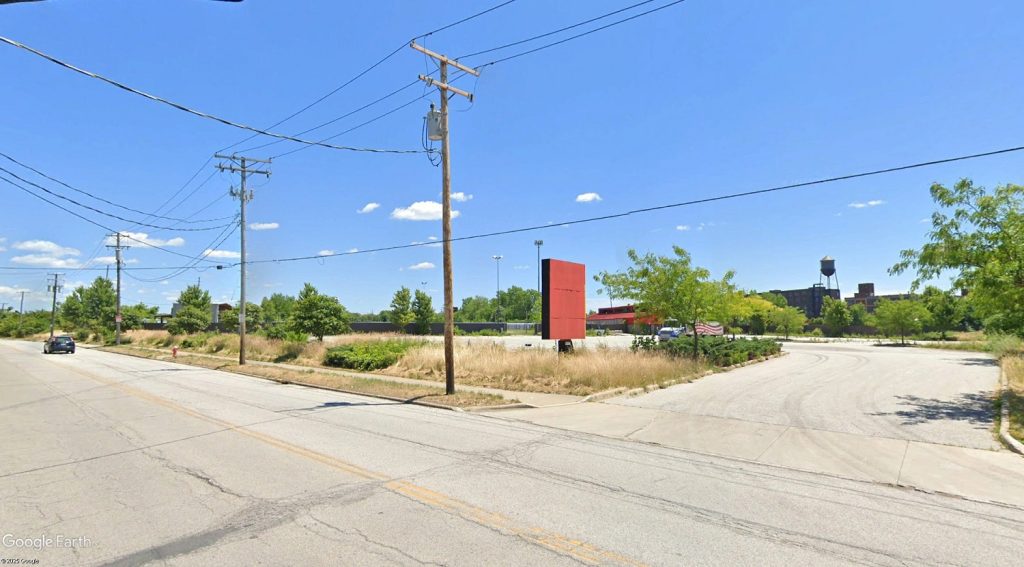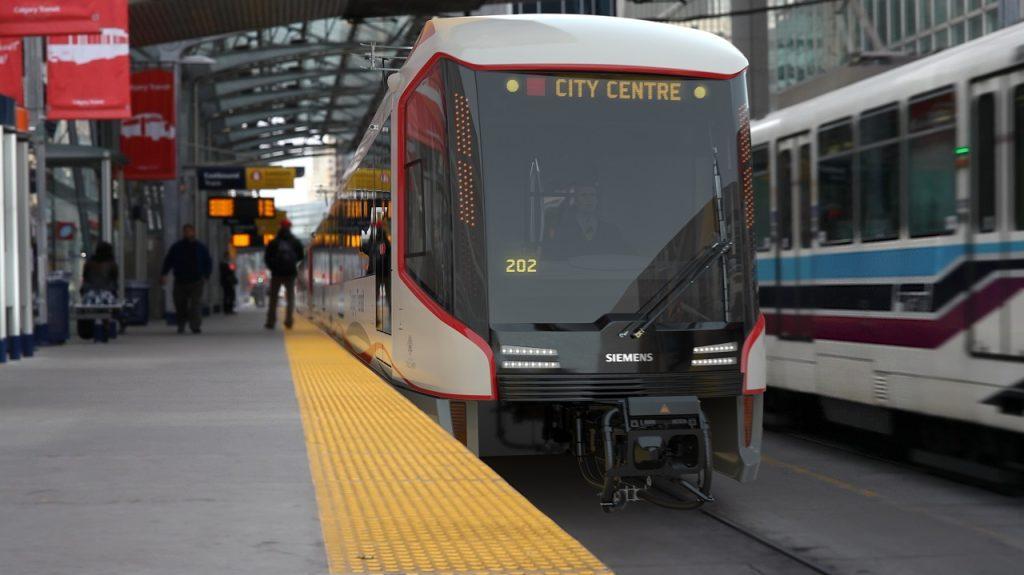
The Greater Cleveland Regional Transit Authority (GCRTA) is reportedly in negotiations with Siemens Mobility to supply dozens of trains like this one for use on all three of the metro area’s rail lines. The standardization of trains and infrastructure means GCRTA could offer a one-seat ride with no transfers from Shaker Heights to the Airport or from Windermere to Cleveland Browns games and special events on the lakefront trains (Siemens). CLICK IMAGES TO ENLARGE THEM.
New trains would replace outdated, unreliable fleet
When the Greater Cleveland Regional Transit Authority (GCRTA) acquired new Italian-built Breda trains for its Blue and Green light-rail lines linking Shaker Heights and downtown Cleveland, Jimmy Carter was still in the White House. It was only a few years later, in Ronald Reagan’s first term, when GCRTA received new Japanese-made Tokyu trains for its heavy-rail Red Line between Cleveland Hopkins Airport and Windermere. GCRTA is still relying on trains that predate the mullet. To say that these trains are due for a replacement is an understatement.
Consider some hard numbers. Over the last 10 years, rail car maintenance costs have grown by 148 percent. GCRTA reported train breakdowns have similarly skyrocketed. Several trains have caught fire in the past two years. GCRTA’s old trains are having to go in for maintenance eight times more often than newer trains would, resulting in service disruptions. Trains are often delayed or don’t show up at all. That has contributed to a drop in ridership made worse by the pandemic and remote working, with boardings at Tower City Center, GCRTA’s busiest station and its only stop serving downtown right now, dropping more than 80 percent since 2019.
Yesterday, at a luncheon held by a chapter of the American Society of Highway Engineers, Michael Schipper, GCRTA’s deputy general manager of engineering and project management, reported that the transit authority has selected a manufacturer and railcar type to replace the rail fleet over the next several years. However, since GCRTA is still negotiating many details in the purchase agreement, Schipper would not reveal who the manufacturer is. Neither could GCRTA’s chief spokesman.
“GCTRA is currently in an active procurement for the rail car replacement project,” said GCRTA Public Information Officer Robert Fleig. “The nature of the procurement process is confidential. As such, at this time I am unable to answer your inquiry.”
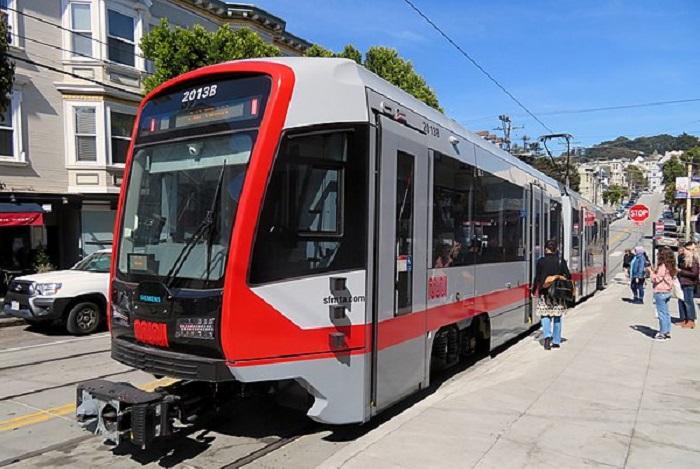
Siemens’ S200 trains in San Francisco serve outer ends of the “Muny” or municipal railway system as a streetcar, boarding passengers from low-level platforms and curbs. Downtown in the subway, the trains stop at high-level platform stations. The same may hold for the Blue/Green Lines linking downtown Cleveland and suburban Shaker Heights (Siemens).
According to people at yesterday’s event, Schipper did acknowledge that the type of railcars for Cleveland would be modeled after those used in Calgary, Canada and San Francisco. There is only one railcar that is common to both cities — it’s called the S200, made by Germany-based Siemens Mobility. Its railcar manufacturing plant in Sacramento, Calif. built the S200 trains and would likely build Cleveland’s as well.
The S200 can board passengers from high-level platforms like those on GCRTA’s Red Line as well as from low-level platforms like those on the Blue/Green Lines. It has a top speed of 55 mph which is slower than the Red Line’s current 60 mph speed but faster than the Blue/Green Lines’ 45 mph maximum. It accelerates as fast as Blue/Green Line trains did when they were new, but not as quickly as the Red Line’s. The Siemens train has a seating capacity of 60 which is less than the Red Line trains’ 80 seats and the Blue/Green Lines trains’ original 84 seats, since reduced to handle wheelchairs and bicycles.
Compared to GCRTA’s existing trains, the S200 can handle many more standees — up to 193 people — because most of its seats are longitudinal, meaning they are along and against the walls. It has room for bicycles and wheelchairs plus a video and audio information system above and between the doors which are on both sides of the train. And the trains can be coupled together to handle larger crowds during sporting events, downtown parades and other big events. However you won’t be able to walk from one train car to another as there is an operator control cab at both ends of each car.
If you’re looking to catch a ride soon on Cleveland’s next-generation trains, you’re going to have to be patient. GCRTA says that the first railcar won’t be supplied until 30 months after the agency awards the manufacturer with a contract. Twenty-four railcars will be delivered in the opening round, which will replace the GCRTA Red Line’s 1984-built trains first because they’re apparently in the worst shape. The 24th railcar to arrive in Cleveland won’t happen until 42 months after the contract award, GCRTA says. GCRTA hopes to award a contract this year.
GCRTA’s railcar consultant, LTK Engineering Services of Philadelphia, said Cleveland’s transit agency needed to replace its Red Line trains no later than 2024 and the Blue/Green Lines’ trains five years thereafter. GCRTA has $189.4 million in hand or pledged but still needs another $111 million for another 36 new railcars to replace the 1980-built Breda cars that run on the Blue/Green lines, which continue through to downtown’s Waterfront Line. Schipper said a closed bridge on the Waterfront Line would be repaired before the Cleveland Browns’ 2023 season so fans can again take the train to the games, as well as to the air show and the Flats East Bank.
The news that GCRTA has apparently picked a new railcar and its builder was welcomed by local and state groups representing rail and transit riders.
“The devil is in the details but GCRTA is so badly in need of new cars,” said Alex Rubin, a member of Clevelanders for Public Transit’s coordinating committee and the organization’s treasurer. “The number of FTA-reported (Federal Transit Administration) train breakdowns in Cleveland is off the charts. It’s obvious to anyone riding that their railcars are out of date. I commend the GCRTA maintenance staff for doing what they have to do to keep the trains running. It’s well past the the cars’ replacement date and everyone knows it.”
“They (GCRTA mechanics) are literally holding things together with spare parts from other cars,” said Stu Nicholson, executive director of All Aboard Ohio. “We were hearing that three or four years ago. It’s a shame it went this long to get this done. Hopefully wisdom has prevailed that this can be done soon.”
Schipper also noted that the new trains are skinnier than what GCRTA currently has. Since federal regulations limit the horizontal gap between train doorways and station platforms to no more than four inches, the Red Line stations have to be modified. There also cannot be a vertical gap of more than two inches. GCRTA had considered continuing the costly and inefficient practice of maintaining two different types of trains for such a small 33-mile, 52-station system — one type of train that serves the Red Line’s high-level platforms and another serving the Blue/Green Lines’ low-level platforms.
But that limited the number of manufacturers who would respond to orders of so few unique railcars. GCRTA issued a request for proposals (RFP), this time for a standardized rail car that could operate on any rail line and offered to widen the platforms at its 18 Red Line stations for $15 million. But that RFP had such a short response timeline that only one manufacturer responded, sources said. Reportedly Siemens was interested but GCRTA refused to extend the timeline so it could submit a response. Ultimately, the transit authority reissued the RFP last year.
At yesterday’s event, Schipper also reportedly said that a separate RFP will be issued by GCRTA for design services to come up with a modular system to widen station platforms that can be installed quickly. GCRTA said it cannot shut down the system for long periods to make more disruptive platform modifications. GCRTA will also need to modify train maintenance equipment at its Central Rail Facility near East 55th Street, namely a train lifting mechanism to account for the narrower trains. But the fact that GCRTA was seeking to modify its rail system infrastructure to accommodate manufacturers rather than ask manufacturers to modify their trains to fit GCRTA’s system was also welcomed.
“I’m pleased they’re taking an off-the-shelf design,” Rubin said. “You’re not a guinea pig and there’s cost savings to be had there. What do you do when you have to replace them? The industry has sort of settled on a standard for railcars in terms of sizes and lengths.”

GCRTA began scrapping some of its Red Line train cars in May 2021 at the Brookpark Yards near the airport. Other trains, including those of the Blue/Green Lines, are visible in the background at left and await the scrapper as well. Transit rider groups say GCRTA should have replaced its rail fleet with new cars a decade ago (GCRTA).
“We really don’t need to reinvent the wheel here,” Nicholson added. “It’s time take to them (GCRTA’s old trains) to the scrap yard. Maybe save one for a museum.”
Both advocates had other questions as well, many of which could not be answered yet. Those include how long the testing and training schedule would be? How long would it take to modify the Red Line station platforms and how long would service be disrupted? Would the station modifications be temporary or permanent?
Since GCRTA began in 1975 from uniting the Cleveland Transit System and several suburban systems, including the Shaker Heights Rapid Transit, the regional transit authority has continued to operate its legacy rail systems as if they were separate. So the groups also welcomed news that Schipper had about having standardized railcars so any train could run on any of GCRTA’s three lines. That means being able to run trains from Shaker Heights through downtown to Cleveland Hopkins Airport, or from Windermere to the Waterfront Line for Cleveland Browns games, as Schipper suggested yesterday. Such options could also boost prospects for transit oriented development, transit advocates said.
“It’s a smart move by GCRTA and should’ve been done a long time ago,” Nicholson said. “To me that’s what makes this so significant. It will hopefully mean reversing the ridership losses and possibly allow GCRTA to consider expansion again.”
The Campus District Inc., a community development corporation which represents stakeholders on the east side of downtown including Cleveland State University, Cuyahoga County Community College and others, has urged GCRTA to restart studies from 23 years ago of extending the Waterfront Line, which was never intended to dead-end forever in the Municipal Parking Lot after it opened in 1996. Campus District Executive Director Mark Lammon said the Waterfront Line should be extended as a Downtown Loop, an opportunity that makes more sense now that GCRTA is seeking a standardized railcar that can run on all lines.
END

